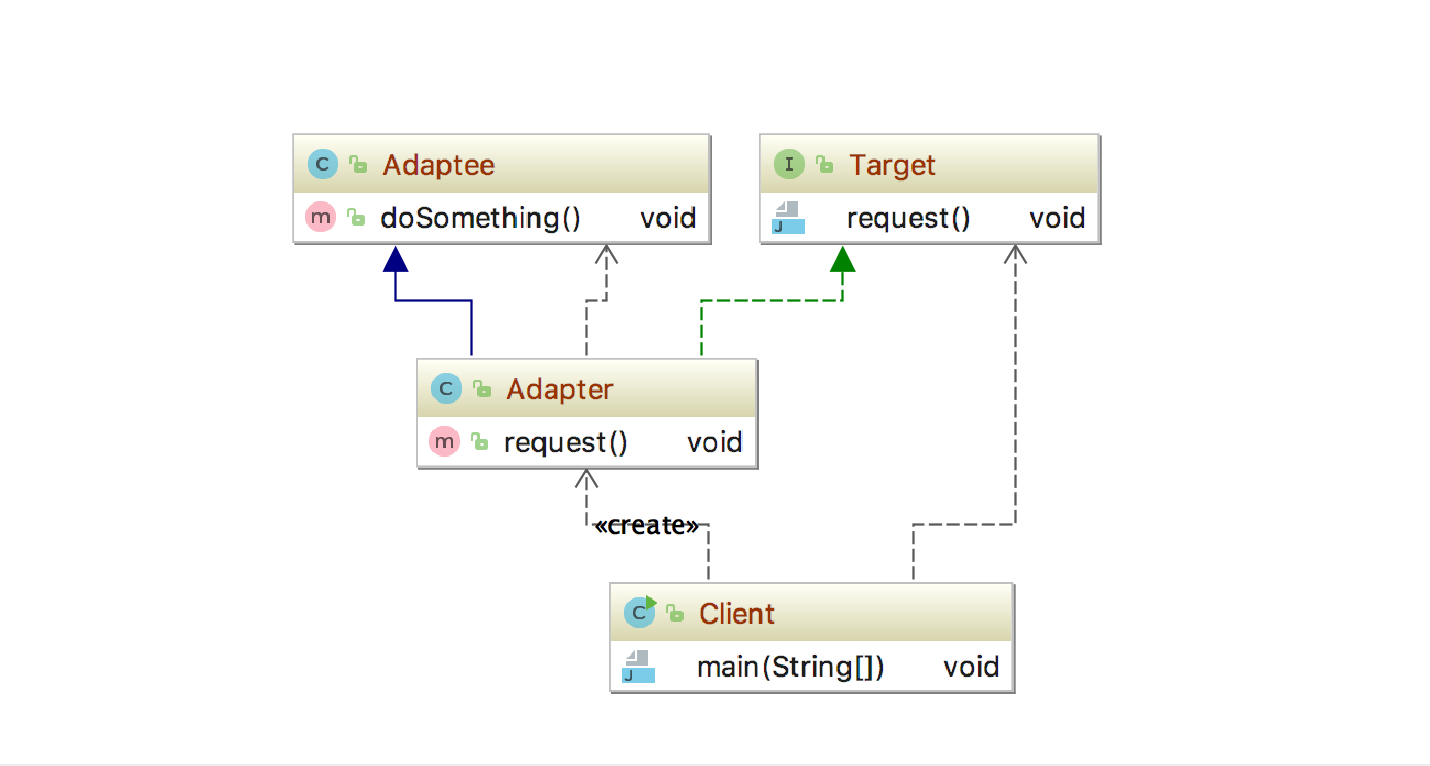设计模式之—适配器模式
1.适配器模式的定义
Adapter Pattern:Convert the interface of a class into another interface clients expect.Adapter lets classes work together that couldn't otherwise because of incompatible interface.
将一个类的接口变换成客户端所期待的另一种接口,从而使原本因接口不匹配而无法在一起工作的两个类能够一起工作。
2.通用类图
适配器模式中有三个主要对象。
Target:
转换成的目标接口,即将其他类转换为此Target接口
Adaptee:
被转换的类
Adapter:
适配器,通过实现Target接口并继承Adaptee类,并重写Target接口方法来实现适配
类图如下:

实现代码如下:
Target类:
public interface Target {
/**
* request
*/
void request();
}
Adaptee类:
public class Adaptee {
public void doSomething(){
System.out.println("Do something!");
}
}
Adapter类:
public class Adapter extends Adaptee implements Target {
@Override
public void request() {
doSomething();
}
}
Client类:
public class Client {
public static void main(String[] args) throws Exception {
Target target = new Adapter();
target.request();
}
}
3.优点
1.可以使两个无关联的类一起运行
2.灵活性好,当不需要此适配器的时候,只需要将此类摘除掉即可
4.总结
适配器模式通常用来解决在功能变动时,解决接口不相容的问题,在系统设计阶段不应该使用此中模式




